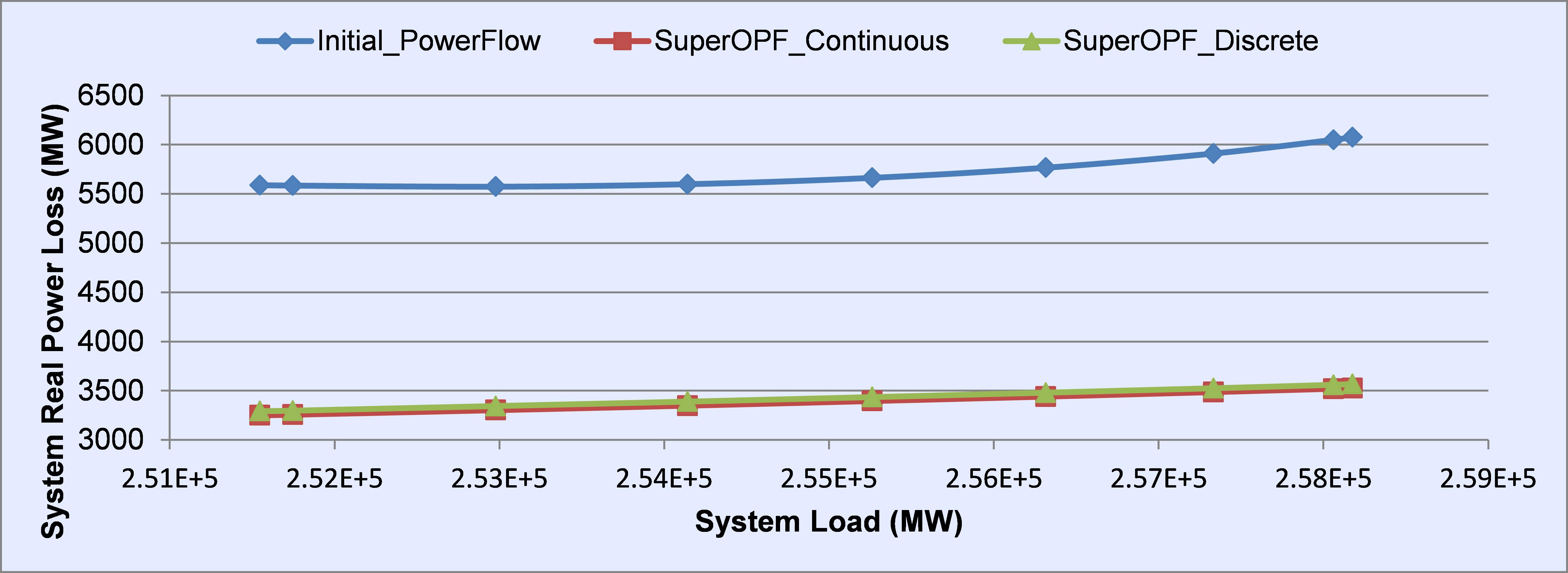SUCCESSFUL STORIES
Power Systems
The optimal power flow (OPF) problem is one of the most widely studied topics in power system operation and computation. This problem is relevant in power system operations, scheduling, and planning. The main objective of OPF is to determine the optimal steady-state operation of an electric power system while satisfying technical, economic and environmental constraints. With the structural deregulation of electric power systems, OPF is becoming a basic tool in the power market.
From a computational viewpoint, the OPF problem is a large-scale non-convex NLP problem, in which both the objective function and constraint functions are nonlinear. The OPF problem becomes a mixed-integer NLP when discrete control variables such as transformer taps, shunt capacitor banks and FACTS devices are taken into account.
GOTI has developed a TRUST-TECH based multi-stage, multi-level solver, termed SuperOPF, for solving large-scale OPF problems.
- This solver possesses following features:
- It can solve full AC OPF problems effectively and robustly;
- It can handle discrete and continuous control variables;
- It can diagnose and optimally correct infeasible constraints;
- It can handle a large number of contingencies for large-scale power systems.
- It can achieve the best OPF solution.
The solver has been applied to serve real-life power networks. The figure shows the result for minimizing system real power loss of a 13183-bus power system. The OPF problem consists of 31134 optimization variables, of which 2814 are discrete, 26266 nonlinear equality constraints and 12262 nonlinear inequality constraints. Our solver has successfully reduced almost 42% of the system real power loss, from the initial 5589~6078 MW to 3293~3569 MW, which is reduced from 2.2% to about 1.3% w.r.t. the system total load.


